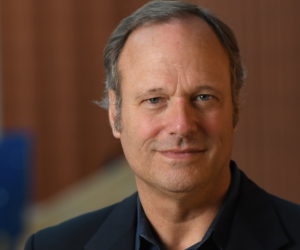
In the late 1950s and early 1960s, the Ford Foundation used its funding to transform American business school from a vocational orientation to a more “academically and discipline based orientation.” While an important corrective for its time, we can now see that the pendulum has swung too far and it is time for it to swing back towards practical relevance in both the research we produce and the curriculum we teach. The first has drifted towards an emphasis on theoretical contributions while the latter has remained ossified in an approach that is rooted in 1980s neoliberal shareholder capitalism.
So serious is the need for this transformation that Professor Sydney Finkelstein of the Tuck School of Business delivered a sharply worded rebuke at the 2022 Deans Conference, asking “Are business schools a scam?” His critique was that our culture and reward systems lead us towards research and teaching that have little relevance to real-world problems or impact on business. As a result, we are in the midst of a crisis that we are failing to understand or address.
That Finkelstein is raising this point in a major gathering of deans at a meeting convened by the AACSB, the accreditation body of business schools, is an important sign that a critical self-examination has begun. And he is not alone; the warning is being variously raised by business school deans, university presidents, accreditation bodies, faculty and students.
TRANSFORMING B-SCHOOL RESEARCH & TEACHING
The challenge at this time is becoming less about making the case for the need to change and more about the ways in which things must change. It is time for concerted and systems-wide change in the business school environment, in much the same way that the Ford Foundation set business school research on its present trajectory in the 1950s. We can begin to see changes and innovations in isolated pockets, and the task before us is to help them diffuse. Putting it in business school parlance, we are at the beginning of the innovation S-curve and we will either see a steep and swift uptick of adoption or the still-born demise of a movement that never caught on. Here are some of the changes that are being explored.
Rewards for engagement. Amending annual review criteria to include Practical Impact alongside the standard triad of Research, Teaching and Service. Allowing practitioners to submit letters in tenure cases and forming committees that know how to read them. Overcoming the Sagan Effect that tends to devalue public engagement. Some schools are creating differentiated tracks for academic scholars, with some focusing on more basic research, while others focusing on more applied research and others somewhere in between.
Reconnect research to practical topics. Efforts like the Responsible Research in Business & Management network (RRBM) are encouraging academic scholars, deans, accreditation bodies, and in particular journal editors to promote business research that serves the public good.
Rewards for teaching. Part of Finkelstein’s critique is that we devalue teaching, seeing it as a burden or distraction, calling it a teaching “load.” At present, the incentives to develop new and innovative courses are low, if not negative, in a reward system that privileges research above all else. Some schools are beginning to promote such work and as faculty begin to delve more deeply into research questions of practical relevance, they are able to bring that work into the classroom in new and innovative ways.
Develop new metrics for impact. Numerous platforms, such as Altmetric, Plum X, and Impact Story are attempting to measure impact beyond the academy. Though in their infancy, they are backed with significant financial and institutional support and focused on a very real challenge. While some may scoff at social media hits (such as Twitter likes, or Facebook posts), one cannot argue that an essay in The Conversation that is read almost 2 million times in 2 years is not notable impact.
New types of staff support. Schools are hiring editors, writing coaches, social media and web design, public relations, community engagement, traditional media, government relations, public speaking coaches, storytelling, and, a new form of speciality called knowledge broker to help faculty bring their work out into the world.
New types of training. For many, faculty must be trained to bring their work out into the world themselves. For that, schools are providing training in talking to journalists, government relations, editorial writing, community engagement and public speaking. And they are relevant for all stages of the career, from doctoral training through senior faculty.
New types of centers for engagement. Some schools (such as UMass, Northwestern, Stony Brook, and Michigan) are developing specialized centers or institutes for researching, understanding, applying and promoting public engagement. These join similar programs at the National Academies of Sciences, the American Association for the Advancement of Science, and the Sloan Foundation.
Improve public access to scientific research. A provocative topic, but the paywall that blocks public access to academic (and often publicly supported) research is an issue of concern, one that some schools, such as the University of California, have decided to tackle.
THE CHALLENGE IS GREAT — AND SO ARE THE STAKES
The challenge for business schools is institutional in nature, not easily tackled by one school alone. It must include all aspects of the field including: doctoral training, faculty hiring, journal review, promotion and tenure criteria, school rankings, accreditation, pedagogy, recruiters, admissions and more.
Support for these changes is growing, notably from our students. In 2022, The Financial Times reported that upwards of 70% of the Gen Z business school cohort want course content that reflects the changes going on in society, from sustainability to poverty, diversity and inclusion. But this generation is frustrated as they want “business schools to ‘be the grown-ups’ and take a lead, rather than simply respond to student demands.”
But the inertia against such change is not insignificant, from the fear of dropping in the rankings to a rank of senior faculty who see no need to change. So, while encouraging innovations in curriculum and research can be seen, a heavy emphasis on 50-year-old notions of shareholder primacy and a variant of the “greed is good” mentality, still prevails.
In the end, business and business education must be brought to bear to address the great challenges of the 21st century, such as climate change and inequality. Corporations can, at their best, be vehicles of social progress and the solution to basic problems such as the provision of food, healthcare, education, equality, and social progress or, at their worst, provide the tools to multiply the effects of the darkest of human impulses and result in exploitation, materialism and greed. To be the former, we need to cultivate a new kind of leader that sees the market in all its evolving potential. Our research and our teaching can create such leaders. Whether we respond is a choice that is ours to make. We will either be part of the solution and a force for constructive and aspirational change or a part of the problem by maintaining the status quo.

Andrew Hoffman is Holcim (U.S.) professor of sustainable enterprise at the University of Michigan’s Ross School of Business and School for Environment & Sustainability. He will chair a panel titled “Fixing the Research Culture” at the AACSB’s annual international conference April 23-25.





Questions about this article? Email us or leave a comment below.